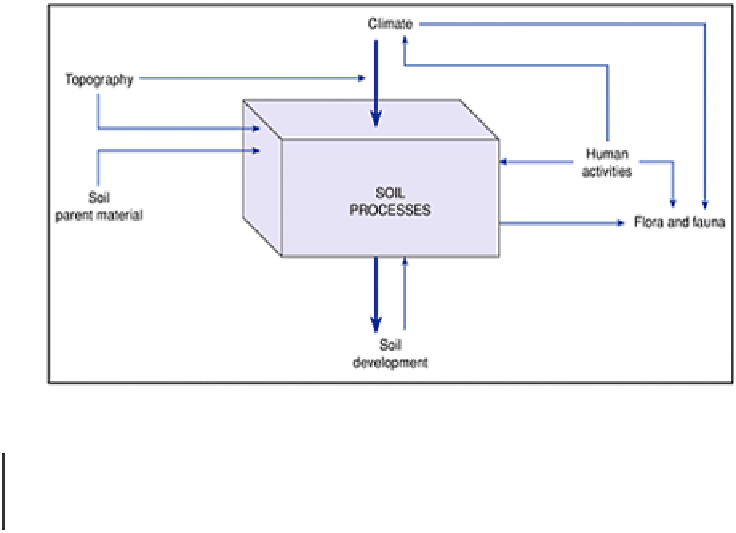Environmental Engineering Reference
In-Depth Information
Figure 19.3
Factors controlling the formation of soils.
3 Relief and hydrology.
4 The length of time during which soil-forming processes have been active.
5 The ecosystem, including vegetation, fauna and the effects of human activities.
Dokuchaiev, a famous Russian soil scientist of the nineteenth century, was the first to
record the connection between the genesis of soil profiles and these five controlling
factors (Figure 19.3). Later an American soil scientist Hans Jenny (1941) expressed the
relationship in his equation of soil formation:
where
s
= soil profile or property,
cl
= climate,
p
= parent material,
r
= relief,
t
= time,
o
= organisms, including humans. The importance of the work of Dokuchaiev, Jenny and
other pedologists is that soils are recognized as 'independent natural bodies', each with a
distinct succession of horizons reflecting the combined effects of a particular
combination of the five genetic factors. Over time, soils were considered to evolve
towards a condition of equilibrium corresponding to a particular ecological climax.
The effects of climate and soil formation operate through precipitation and
temperature. High rainfall produces intense leaching and strongly acid soils. Lower
rainfall gives less marked leaching with the possibility of calcium carbonate in soils over
calcareous rocks and deposits. Temperature affects the speed of biochemical reactions in
soil and the rate of evapotranspiration from the soil surface. Thus low summer
temperatures retard the decomposition of organic matter and encourage its accumulation
at the surface as peat (Plate 19.2).
The main properties of parent materials that influence soil formation are the
permeability, base content, hardness, grain size and mineralogy of their weathering
products. On drift deposits, poorly drained soils will form in fine-textured clays and silts.
However, well drained brown earths (
cambisols
) occur where the deposits are more
permeable. Hard igneous, metamorphic and sedimentary rocks disintegrate only slowly to





